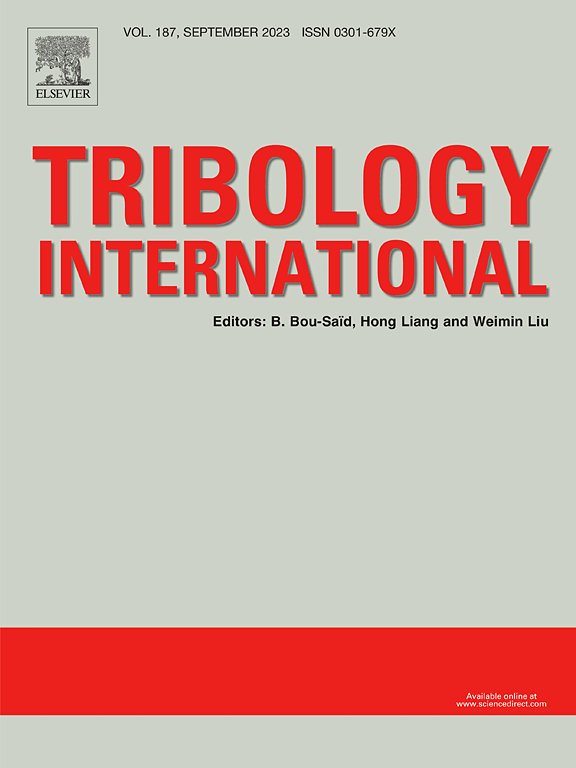Tribological properties of ultralight and biomimetic helical composites reinforced by low-content carbon fiber from direct ink writing 3D printing
IF 6.1
1区 工程技术
Q1 ENGINEERING, MECHANICAL
引用次数: 0
Abstract
This study explores direct ink writing (DIW) 3D printing for fabricating ultralight biomimetic helical carbon fiber composites. Composites with varying interlaminar angles (0°-40°) were compared to mold-formed samples in terms of tribological performance. The DIW method improved fiber orientation and interfacial bonding, significantly enhancing mechanical and wear properties. A 10° helical angle yielded over 50 % reductions in both friction coefficient and wear rate, along with high hardness and modulus. The printed composite achieved ultralow density (0.467 g/cm³) while maintaining structural integrity. These findings demonstrate the potential of DIW-fabricated helical composites for lightweight, durable applications in aerospace, automotive, and other high-performance engineering fields.
直接墨水书写3D打印低含量碳纤维增强超轻仿生螺旋复合材料的摩擦学性能
本研究探索直接墨水书写(DIW) 3D打印用于制造超轻仿生螺旋碳纤维复合材料。不同层间角(0°-40°)的复合材料与模具成型样品的摩擦学性能进行了比较。DIW方法改善了纤维取向和界面结合,显著提高了机械性能和磨损性能。10°的螺旋角使摩擦系数和磨损率降低了50% %以上,同时具有较高的硬度和模量。打印的复合材料在保持结构完整性的同时实现了超低密度(0.467 g/cm³)。这些发现表明,diw制造的螺旋复合材料在航空航天、汽车和其他高性能工程领域具有轻质、耐用的应用潜力。
本文章由计算机程序翻译,如有差异,请以英文原文为准。
求助全文
约1分钟内获得全文
求助全文
来源期刊

Tribology International
工程技术-工程:机械
CiteScore
10.10
自引率
16.10%
发文量
627
审稿时长
35 days
期刊介绍:
Tribology is the science of rubbing surfaces and contributes to every facet of our everyday life, from live cell friction to engine lubrication and seismology. As such tribology is truly multidisciplinary and this extraordinary breadth of scientific interest is reflected in the scope of Tribology International.
Tribology International seeks to publish original research papers of the highest scientific quality to provide an archival resource for scientists from all backgrounds. Written contributions are invited reporting experimental and modelling studies both in established areas of tribology and emerging fields. Scientific topics include the physics or chemistry of tribo-surfaces, bio-tribology, surface engineering and materials, contact mechanics, nano-tribology, lubricants and hydrodynamic lubrication.
 求助内容:
求助内容: 应助结果提醒方式:
应助结果提醒方式:


